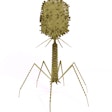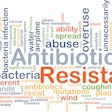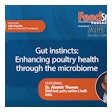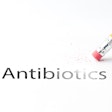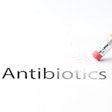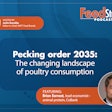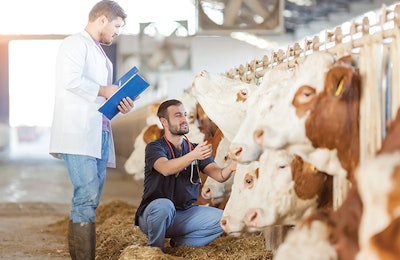
Globally, we're in the midst of an antibiotic revolution. Global health organizations and governments are urgently responding to antimicrobial resistance (AMR) fueled, in part, by systematic misuse and overuse of antimicrobial drugs, including antibiotics.
“Without harmonized and immediate action on a global scale, the world is heading towards a post-antibiotic era in which common infections could once again kill,” writes Margaret Chan, former director-general (2006-17) of the World Health Organization (WHO), in its Global Action Plan on Antimicrobial Resistance, published in 2015.
Underscoring the need for an effective “one health” approach, Chan adds: “Antimicrobial resistance is a crisis that must be managed with the utmost urgency.”
As the world digs its heels into 2019, this sentiment remains as relevant.
“Over 33,000 people are estimated to die each year in the EU due to infections with bacteria resistant to antibiotics,” says Vytenis Andriukaitis, European Commissioner for Health and Food Safety. “This number exceeds the total deaths from HIV, tuberculosis and influenza combined.”
But it isn't just humans struggling with AMR and it's not them consuming the bulk of antimicrobials either – food-producing animals are, Andriukaitis says, hence the push for “prudent and responsible” antimicrobial use in animal husbandry.
'Concrete measures' to fight AMR
European law already requires prescriptions on all antibiotics used in food-producing animals, but rules will tighten further come January 2022 as new regulation on veterinary medicinal products takes effect. New rules will list all antimicrobials – antibiotics, antifungals, antivirals and antiprotozoals – as subject to prescription in all animal species and will ban use for growth promotion, extending the current antibiotics ban.
Preventative use of antimicrobials via medicated feed will also be banned, as will preventative use of antibiotics in groups of animals, and metaphylactic use restricted. The European Commission (EC) will also have power to reserve certain antimicrobials for human use.
Sales of veterinary antimicrobials across Europe are already declining, dropping more than 20 percent between 2011 and 2016, according to the European Medicines Agency's (EMA) October 2018 report from its European Surveillance of Veterinary Antimicrobial Consumption (ESVAC) project.
But Andriukaitis says “the picture is not uniform,” with some Member States seeing an increase in sales of more than 5 percent. Impending regulatory change, therefore, will provide for “concrete measures to fight antimicrobial resistance.”
The EC has also dedicated EUR1.1 billion (US$1.2 billion) to research on antimicrobial resistance, he says, including projects to develop vaccines, phage therapy and new antibacterial monoclonal antibodies to treat resistant infections.
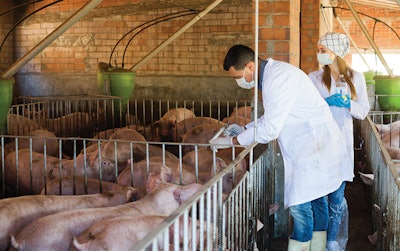
Good farming and hygiene practices are prerequisite to reducing antibiotics in livestock production. (JackF | istock.com)
Europe 'one of the leaders'
Nan-dirk Mulder, senior analyst for animal protein at Rabobank, says drivers behind global strategies to reduce antibiotics in animals have differed, particularly between the United States and Europe.
“Broadly speaking, I believe Europe has been one of the leaders,” Mulder says. “Of course, general antibiotic resistance and antimicrobial resistance is a global issue but Europe, I think, has come a little earlier in reducing its use. Probably one of the landmarks was in 2006 when the EU implemented the ban on antibiotics for growth promotion, and that was an important one.”
Antibiotic reductions in Europe, he says, have been “very much government and regulation driven,” whereas the United States has seen market-driven charge, led by retail and quick-serves.
McDonald's is just one recent example, releasing a policy in December 2018 to reduce overall use of antibiotics important to human health in its beef and dairy supply chain.
David Hedin, consultant at Euromonitor International, adds, though, that Europe too has important retail pledges in place. Carrefour and Tesco, for example, have procurement programs for reduced antibiotics in own-branded products that, combined with Europe's major regulatory push, provides a “great opportunity” for industry to highlight antibiotic practices as the issue is “top of mind to consumers.”
So, what does this mean for the feed industry?
Animal health in the spotlight
In 2017, the European Union adopted its One Health Action Plan Against Antimicrobial Resistance and the European Food Safety Authority (EFSA) and European Medicines Agency (EMA) co-published a scientific opinion on the reduction of need for antimicrobials in food-producing animals (RONAFA).
The opinion identifies an association between antimicrobial use and reduced AMR and calls for a “multifaceted integrated approach” to minimize antimicrobials in animal production. Importantly, the document acknowledges nutrition as one important part of tertiary disease prevention – efforts to increase an animal's ability to cope with pathogens.
“This was the first time there was a proper peer-reviewed scientific assessment on what animal nutrition can offer in terms of its role in prevention. … It was certainly very important to us,” says Alexander Döring, secretary general of the European Feed Manufacturers' Federation (FEFAC).
Döring continues: “The conclusion is that we know animal nutrition is definitely not a silver bullet. There are no alternatives to antibiotics, per se. But to be very clear, definitely nutrition is part of an integrated, multi-stakeholder approach.”
Tertiary prevention, he says, is the “direct hook to the role of animal nutrition,” and the feed industry's most important angle is how to keep animals healthy and support their welfare status.
Döring says action now needs to be taken according to these scientific findings and recommendations, spearheaded by member state national AMR plans and contribution from industry stakeholders.
Of course, the farm itself will be at the forefront of efforts on the ground, he notes, given preconditions like hygiene, biosecurity and animal welfare are critical, but professionals supporting farmers, including feed manufacturers, must establish a better dialogue network.
Joerg Seifert, secretary general of the EU Association of Specialty Feed Ingredients and their Mixtures (FEFANA), agrees.
“Good farming and hygiene practices are prerequisite to achieving the desired reduction of the use of antibiotics in livestock production,” Seifert says. “This is then supplemented by appropriate animal nutrition, including making the right choice of specialty feed ingredients.”
Specialty feeds in particular, Seifert says, are “pivotal” in contributing to adequate nutrition and optimal animal welfare, particularly improved gut function, immunity and better feed preservation – all important when trying to prevent or limit the need for veterinary treatments.

Antimicrobial use and reduced resistance calls for a “multifaceted integrated approach” to minimize antimicrobials in animal production. (Dr_Microbe | istock.com)
Investing in innovation and 'mindset change'
Companies operating in specialty ingredients, therefore, are heavily invested in research and development, he says. FEFANA members re-invest 8 to 25 percent of annual turnover into innovation, he says — “an exceptionally high share compared to other sectors.”
Mulder says innovation is particularly high in gut health. There has been “a lot of activity” in novel additives, probiotics, prebiotics and essential oils, he says, and while it remains a developing area, the general consensus is “this is one of the good directions for feed companies.”
However, Döring adds compound feed remains an important focus area.
“It's not always the matter of a novel ingredient that gets a lot of attention, but it can be a matter of better formulations,” he says.
Literature shows an influence between feed particle size and gut flora, for example, and an importance on when nutrients are made available to the animal, he says, so technology and processing to ensure optimal particle size distribution, homogeneity and increased digestibility remain important.
The challenge will be kickstarting a “mindset change” across industry, he says, to break away from established practices and integrate scientific developments into existing regulatory framework.
“There are clearly opportunities but also challenges,” Döring says. “So, this all has to be carefully balanced and can only be the result of more intensive multi-stakeholder discussions, together with the authorities.”
Mulder agrees: “This is not only for antibiotics but also other issues and concerns we see in the market. I believe industry needs to work much more together – from grains to feed to meat, including the breeding side – because all these social concerns like human health, animal welfare, the environment and food safety require a strong value chain strategy.”








